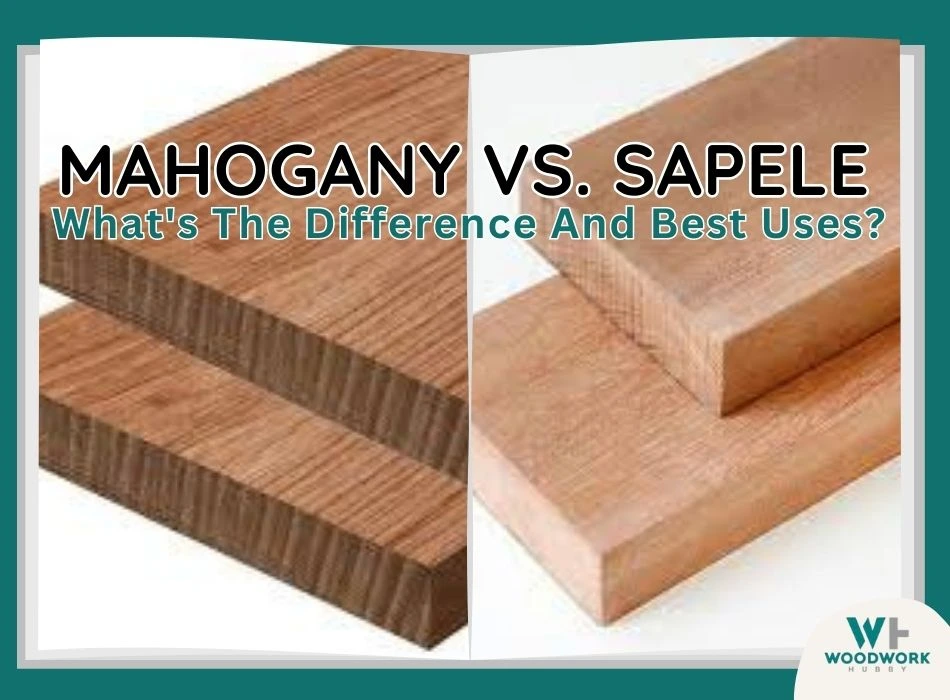I came across a pile of Sapele lumber when shopping for project wood last week. It reminded me of the time when I bought Sapele because of its resemblance to Mahogany. That was ten years ago, and it took me two whole years to use the Sapele because it couldn’t be used in too many ways. I learned the hard way that Sapele wasn’t Mahogany.
Mahogany is more expensive, prestigious, versatile, and dimensionally stable than Sapelle, while Sapelle wood is more easily available and cheaper than Mahogany. They are virtually interchangeable in floor veneer and decorative projects, but Mahogany is better overall.
In this article, you will learn more about the differences between Sapele and Mahogany, alongside their respective pros and cons. You will also find out the ideal uses for each type of wood, so you can decide which one is better for your situation. But let’s start with what’s generally better.
Is Sapele Wood Better Than Mahogany?
Sapelle is not better than Mahogany in most instances, but it is harder than Mahogany. It is also cheaper than Mahogany which can make it a better deal for some contexts.
But you cannot declare either wood to be universally better as they have different characteristics that can be assets or liabilities depending on where they are being used. The table below covers the properties of Mahogany and Sapele.
| Properties | Sapele Wood | Mahogany Wood |
| Janka Hardness | 1410 lbf | 800 lbf |
| Grain Pattern | Interlocked and occasionally wavy | Straight-grained and tight. |
| Dimensional Stability | Low dimensional stability | Excellent Dimensional stability |
| Color | Golden-brown or Dark-brown | Rich red-brown |
| Fault presence | Present (knots) | Usually Fault-free |
| Origin | West Africa | South America |
| Ideal for | Windows and Doors | Furniture |
| Poor option for | Exterior fence | Roofing Shingles |
| Availability | Available year-round | Rare |
| Stain-friendly? | Requires sanding | Stain-friendly |
| Moisture Content | 6-8% moisture after four months of drying | 12% moisture |
| Price (8/4 x 1bf) | $10 | $30.55 |
Sapele Wood
Ranging from a light shade of golden-brown hue to a deep red-brown color, Sapele is often positioned as a competitor for Mahogany as it has a similar color and is even harder than Mahogany, despite being priced at 1/3rd the market rate for Mahogany.
It is a west-African wood that is pretty rigid and scratch-resistant because of its hardness. The level of Sapele’s hardness affects its machinability, but it is ultimately workable.
If your next project requires wood that looks expensive, you can use Sapele. But before you choose it for a load-bearing application like a bench or the stairs, make sure that you know all the pros and cons of Sapele Wood.
The table below covers what I have learned in over a decade of working with this African wood.
| Pros of Sapele Wood | Cons of Sapele Wood |
| Looks beautiful | It can swell with water exposure |
| Is fire-resistant | It can crack in extreme heat |
| Doesn’t get scratched easily | It needs constant maintenance |
| It is cheaper than Mahogany | It can have faults |
| Is more easily available than Mahogany | It doesn’t have high resale-value |
| Has high density | It is hard to stain |
What To Expect When Using Sapele Wood
With the pros and cons above and the characteristics covered earlier, you can probably tell that Sapele is a good wood choice for some projects and a bad one for others. Let me contextualize what I have covered so far about Sapele in terms of woodworking.
The good things you can expect from a Sapele are mainly related to its appearance and price alongside its hardness. Sapele is harder than Mahogany by a decent factor. Where Mahogany can handle the force of 800 lbf, Sapele can stomach 1410 lbf.
That’s pretty close to double the Janka hardness. The hardness impacts the difficulty of scratching. Sapele doesn’t get scratched as easily as Mahogany. It also resists impact better.
Sapele’s visual beauty comes from its color, while its strength comes from its interlocked pattern, which also paves the way for the bad things about Sapele.
If you’re not an experienced woodworker, you will end up with Sapele wood that has serious faults. The interlocked wood pattern of Sapele can make it hard to spot the faults in this lumber.
Another major drawback of Sapele wood is its low dimensional stability. This wood can have some serious swings in its stability with shifts in moisture content. It cracks with changes in temperature and expands far too much with even a slight excess in moisture.
Its rigidity can make it a poor choice for furniture. This is quite significant for woodworkers because they can’t simply replace Mahogany with Sapele in all contexts. Mahogany is most often used in furniture, and Sapele wood is just not made for similar quality furniture.
Most Sapele furniture projects are cabinets that hold decorative objects instead of functional heavy-load items. This brings us to the subject of uses.
Sapele Wood: Ideal Uses
I’ll not deny that Sapele is a very aesthetic wood type. In fact, its usage is best when it revolves around its appearance. From window frames to decorative cabinets, whatever you craft out of Sapele should ideally be more for show than for functional load-bearing.
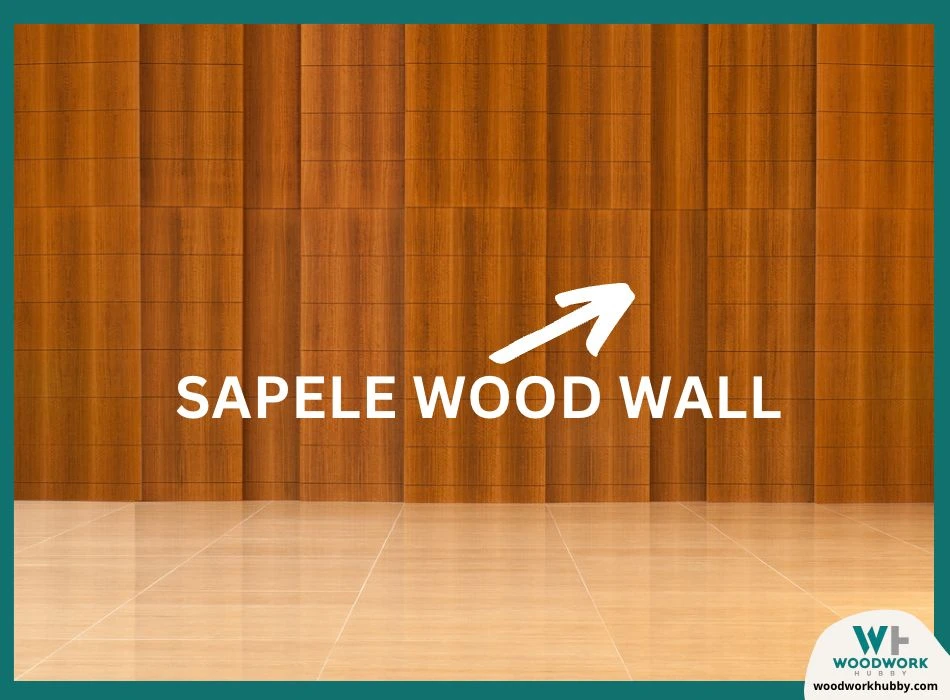
It is a shame that wood with incredible hardness as Sapele can’t really be used to carry weight. I have used Sapele in a wide range of projects and have had success in aesthetic ones more than functional ones.
In my experience, here are the ideal uses of Sapele lumber:
- Veneering – Veneers made from Sapele lend their scratch-resistant quality and aesthetic attractiveness to the material they cover. It is one of the best uses for Sapele.
- Object d’Art – Specialty items made from Sapele wood can be excellent decoration pieces and may look more expensive than they are. Check my post on rich woodworkers to figure out how wood as an art medium can make money.
- Window Frames – Window frames serve a decorative purpose yet have to be durable because they don’t get replaced very often. Sapele window frames are attractive, s scratch resistant, and, most importantly, less affordable.
- Aesthetic Mini cabinets – Small cabinets made out of Sapele don’t have the same challenges as large load-bearing cabinets that need to have very high dimensional stability. They just hold a few plates, pieces of decor, and perhaps a TV remote.
- Luxury Flooring – Sapele’s hardness makes it a great top surface for floors. It looks expensive and feels expensive, but it must be laid professionally to avoid unevenness and to ensure that the floor isn’t brittle. An appropriate subfloor is required.
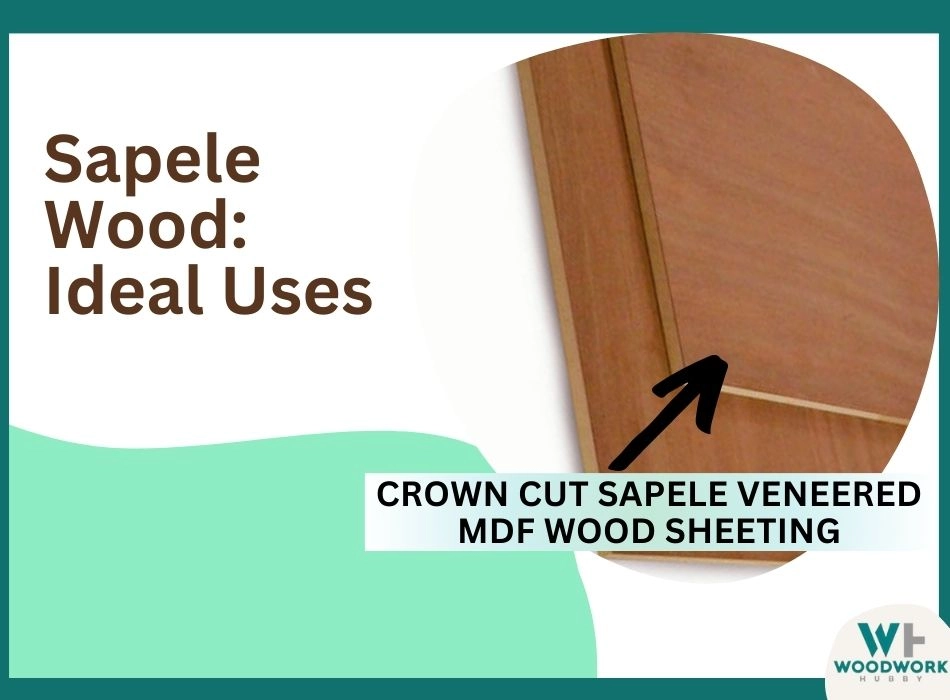
Mahogany Wood
Mahogany has a rich red-brown color, straight grain, and an air of luxury. It is admired for its strength but is sought after because of its prestige. It had decent load-bearing capabilities, and it qualifies as one of the strongest hardwoods to come out of South America.
It is quite dimensionally stable and adheres well to staining and finishing. If you plan to make furniture that lasts, you should prefer Mahogany over Sapele.
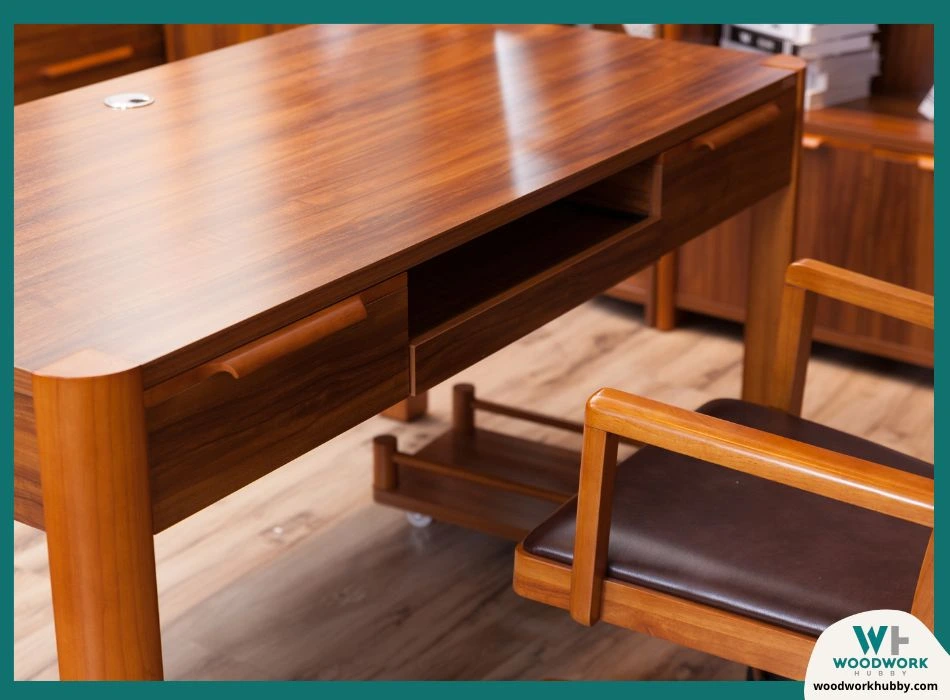
Because Mahogany got introduced to the American mass market first, it is seen as the primary wood in the comparison between it and Sapele. So, if you want your projects to have prestige, then also Mahogany should be your priority.
While Mahogany is the default for many, and defaults are usually safer, I recommend learning about its pros and cons as well before choosing it over Sapele. The table below covers the main advantages and disadvantages of working with Mahogany.
| Pros of Mahogany Wood | Cons of Mahogany Wood |
| Has high dimensional stability | It is expensive |
| Has a grain not prone to faults | It is harder to come by |
| It is attractive and aesthetic | It hard to cut |
| It is reasonably water-resistant | It is hard to lug around and install |
| It can be load-bearing | It can get darker over time |
| It is easier to stain | It can be difficult to find the exact shade |
What To Expect When Using Mahogany
I have worked with Mahogany for over two decades now, so I rarely get surprised by this lumber. But I have heard enough complaints from fellow woodworkers to know that some people need to manage their expectations with Mahogany.
If you’ve not used Mahogany in your projects, you can expect the following. Firstly, Mahogany is pleasantly easy to cut and shape for a hardwood. But it is quite hard to source and pay for if you’re not working on a commission.
In my early days, crafting a mahogany project without a brief used to be scary because of the prospect of finding no buyers for it. But making it feel worth the effort in the end because of its beauty.
The good thing about Mahogany is that it looks and feels great. Its straight grain is tight and free of pockets that could otherwise trap moisture or water. Mahogany almost always holds more weight than you expect it to and is pleasantly surprising in its resilience.
What is surprisingly unpleasant is its weight. The larger your project, the more serious Mahogany’s heaviness can become a core issue in the transport and installation of the project.
And that’s a serious problem because Mahogany is often requested for big projects. Speaking of uses, let’s get into the ideal ones for Mahogany.
Mahogany Wood: Ideal Uses
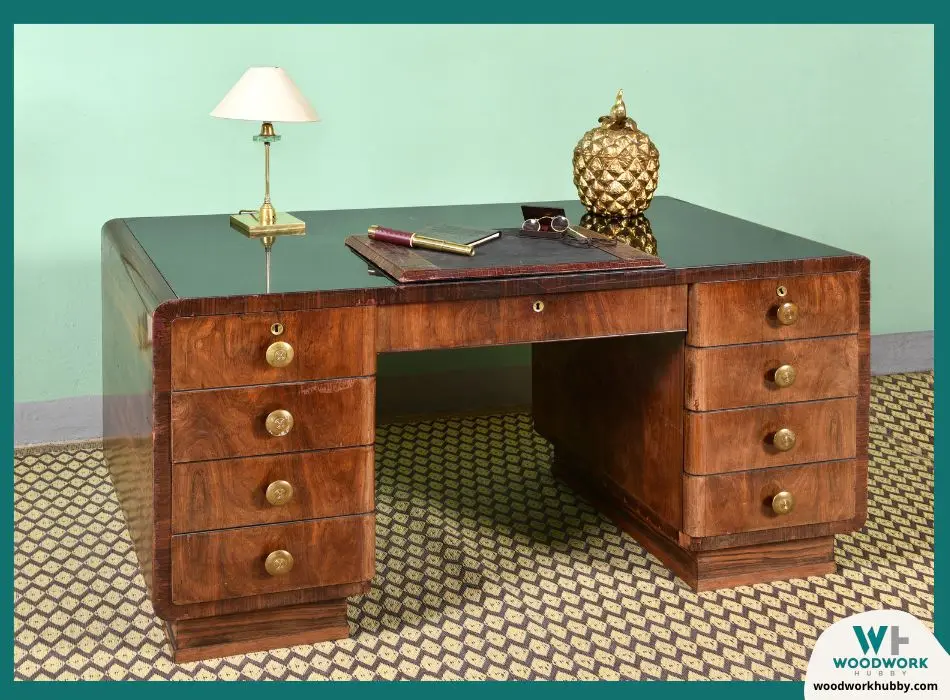
In my experience, you can never go wrong with Mahogany in anything except feasibility. You can use it for almost any indoor project, and it will be functional and beautiful. But whether it will be worth the money, time, and effort depends on the context. Here are the ideal uses of Mahogany that are in line with the wood’s price and rarity:
- Prestige Furniture – Mahogany’s rareness and its price can embed furniture made from Mahogany with an air of luxury. Its natural beauty and great color and texture further reinforce the prestige associated with Mahogany.
- Luxury Flooring – Mahogany is strong enough and aesthetic enough to be used in flooring veneers. It can be used for top planks in flooring, but those can get too expensive. A veneer uses less mass and is, therefore, less expensive.
- Musical Instruments – Expensive musical instruments often feature durable and expensive wood. Mahogany is often used in wooden guitars because of its aesthetic appeal and sonic profile.
- Art frames – Mahoganyred-brown color can draw attention to itself. But when it is used in framing art, the attention-catching property ends up serving the art, which makes Mahogany great for art frames.
Mahogany Vs. Sapele: Which Is Easier To Work With?
Both Mahogany and Sapele were not too hard to cut with power tools. Mahogany is easy to cut with hand tools as well, but Sapele can be a little resistant to them.
The main difference comes in planing and routing operations, both of which can be hindered by an interlocked grain.
Sapele is harder to work with in planing and routing operations because of its interlocked grain pattern. Mahogany is relatively easy to work with but can be very hard to install.
Sapele Vs. Mahogany Price
Sapele is three times cheaper than Mahogany on average. This has to do with Sapele’s year-round availability, ease of growth, and sustainable use compared to Mahogany, which is not being replaced at the rate at which it is being consumed.
For every $10 you spend buying Sapele, you might spend $30 to $35 getting Mahogany. Depending on the final application, the price difference might be worth it or downright frivolous, given that in some situations, both Mahogany and Sapele are interchangeable.
Mahogany Vs. Sapele: Hardness
Sapele is almost twice as hard as Mahogany. It is one of the hardest lumbers to come out of Africa and can beat Mahogany in flooring and veneer applications. Mahogany, however, beats Sapele in its dimensional stability and its ability to resist moisture.
Is Sapele The Same As Mahogany?
Sapele is not the same as Mahogany, though it is becoming a widely accepted substitute for Mahogany in aesthetic and veneer applications. It is harder, cheaper, and less resilient against temperature changes compared to Mahogany.
Mahogany can be used in all use cases of Sapele, but Sapele cannot but used in all instances where Mahogany is used. It also has a major drawback in that its interlocked pattern can bear flaws, which makes it harder to pick.
Final Thoughts – Mahogany Vs. Sapele- What’s The Difference And Best Uses?
Mahogany is more expensive and versatile than Sapelle, but given that it is a prestige wood that is meant to be shown off, it can be replaced by similar-looking Sapele in projects where aesthetics trump function. In veneer, table tops, frames, and flooring, Sapele outperforms Mahogany for less money and with almost no hassle! But for furniture, doors, and weight-bearing projects, there’s Sapele can’t compete with Mahogany.

